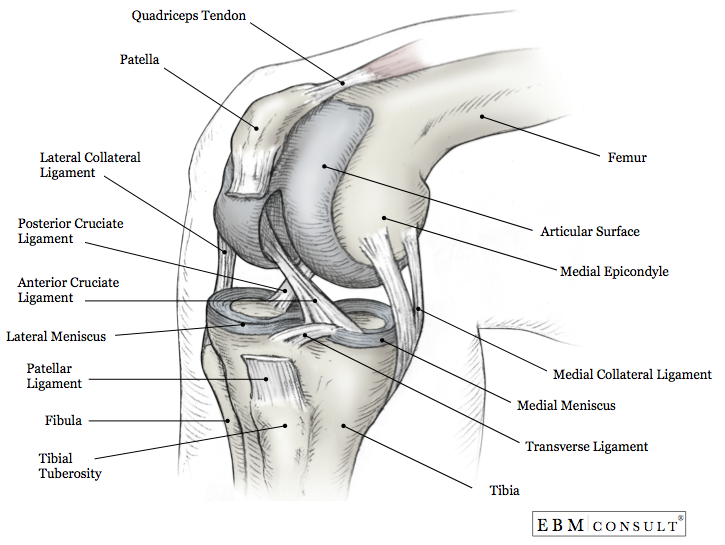Posterior Sag Sign
|
|---|
-
The PCL is attached to the posterior
intercondylar area of the tibia and passes anteriorly, medially, and upward to
attach to the lateral side of the medial femoral condyle.
- This ligament prevents backward displacement of the tibia or forward sliding of the femur.
- Have the patient lie supine on the exam table.
- The examiner raises the leg until the hip and knee are at 90° of flexion.
- Support the leg under the lower calf or heel in the air.
- Patients leg should be relaxed.
- Observe the position of the tibia in comparison to the femur.
- Have the patient lie supine on the exam table.
- Place the patient's involved limb in 45° of hip flexion and 90° flexion of the knee.
- Observe the position of the tibia in comparison to the femur.
- Sensitivity: 0.79
- Specificity: 1.0
- Likelihood ratio:
- Positive test: LR: 79
- Negative test: LR: 0.21
- Cook CE, Hegedus EJ. Orthopedic physical examination tests: An evidence-based approach. Upper Saddle River, NJ: Pearson prentice Hall; 2008.
- Rubinstein RA, Jr. et al. "The accuracy of the clinical examination in the setting of posterior cruciate ligament injuries." The American journal of sports medicine. 1994; 22(4):550-557.
Anatomy

Technique
Or
Diagnostic Accuracy
References

